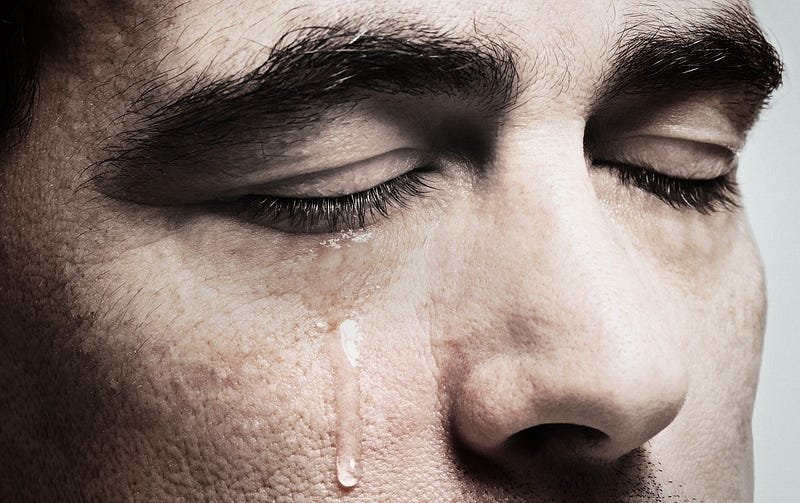Why and When we cry?
Human beings cry for different reasons: grief, sadness, helplessness or for feeling frustration, but we can also cry with happiness.
Some animals also cry when they feel sad or sore, but the human species is the only one that cries with emotion.

Let’s see in what circumstances we cry and why we do it.
We cry for biological reasons.
With crying, the tear is cleaned, adequate hydration of the eyes is achieved, and hormones are released that cause our well-being.
Stress leads to an emotional overload in people, and crying eliminates a part of the adrenaline that causes that stress.
It is proven that when crying, the body releases “endogenous opiates” that cause the same effects as some painkillers.
But not always that we expel tears means that we are excessively sad or happy; the body is constantly expelling tears for other functions.
Let’s define the types of tears:
Basal tears: These types of tears have nothing to do with emotions. They serve to keep the eye clean and moist, nourish the cornea and act as a lubricant for the movement of the eyelids. They are produced all the time.
Reflex tears: They act to clean the eye, get rid of particles and foreign bodies, and eliminate irritating substances. A prominent example of reflex tears is when peeling onions.
Emotional tears: they are caused by a high alteration of the mood, especially negative states, such as bad news, sadness or impotence, although they also appear in positive emotions, such as very intense happiness.
Analyzing the types of tears
Emotional tears originate from causes other than reflex and basal tears and have a different chemical composition.
Basal and reflex tears have water, glucose, antibacterial components, potassium, and sodium, giving the characteristic salty taste to tears. While emotional tears contain hormones that the brain produces in stressful situations.
Some neuroscientists claim that when we cry in the middle of a state of anguish, tears will work by eliminating these hormones that would otherwise accumulate in our bodies, maintaining the stress level.
This would be the reason why when we cry, we feel more comforted.

Why do we cry because of happiness?
In these cases, tears function as an emotional decompression and fulfill an essential communicative function.
Let’s not forget that the fact of crying generates feelings of solidarity and empathy in other individuals, and compassion is used to express a large number of emotions.
Therefore, it could also be considered a model of non-verbal language that can help cement or invigorate personal relationships.
Consider that if many people cry in the same place simultaneously, the bonds between these individuals are markedly strengthened.
Some curious facts about crying:
- On average, men cry once a month, and women five times a month (crying occurs especially before and during menstruation — up to five times more than usual).
- When we are small children, we cry to attract our mother’s attention. It is very likely that throughout human evolution, the feeling of seeking help with the stimulus of crying has been linked, so it is more feasible for a person to cry when someone is present.
- When women cry with emotion, tears contain a chemical that reduces sexual desire in men.
- While women tend to cry more out of helplessness or anger, men cry more out of pride or joy.
- In ancient times, tears were associated with the states of the body, and crying was seen as a purge of the excesses of the brain. Therefore it was believed that the people “who thought the most”, the most intelligent, cried the most.
Crying: A Complex Symphony of Biology and Emotion
Crying, often seen as a sign of weakness, is actually a complex biological and emotional response with a surprising range of functions. From lubricating our eyes to releasing stress hormones and strengthening social bonds, tears play a vital role in our well-being.
This exploration of tears reveals a fascinating interplay between our physical and emotional states.
We learned that tears come in various forms, each serving a specific purpose.
Basal and reflex tears keep our eyes healthy, while emotional tears help us manage stress and express a wide spectrum of emotions, from deep sorrow to overwhelming joy.
The social aspects of crying are also noteworthy.
Tears can evoke empathy and compassion in others, fostering stronger connections. Interestingly, research suggests that crying together can even strengthen bonds between individuals.
While the average frequency of crying differs between genders, the underlying purpose remains the same – to communicate our emotional state and seek support.

In conclusion, crying is not just a sign of sadness. It’s a multifaceted response, deeply rooted in our biology and essential for our emotional and social well-being.
So next time you find yourself tearing up, embrace it – your body is simply taking care of you, both physically and emotionally.

